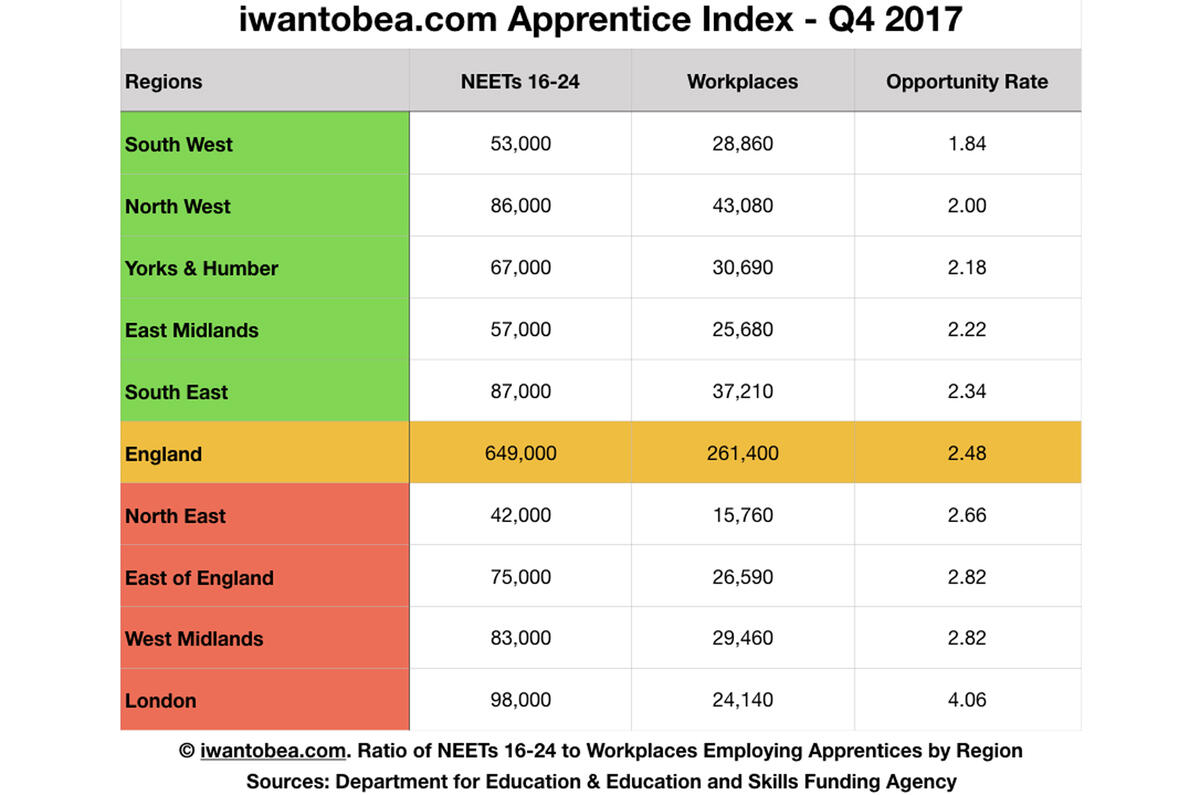It’s a well-known fact that the British car industry has a skills shortage, and that despite being a major employer in this country it has struggled to train up talent to meet the opportunities for expansion.
The reasons have long been the source of soul-searching within the car industry. It’s true that some of the biggest brains get lured by the biggest salaries in banking, with which the car industry cannot compete, and it’s also true that the car industry’s reputation – unjustifiably, especially in this era of electrification and autonomy – still lags somewhere in the industrial wasteland of the 1960s.
But while those debates rage on, it is interesting to read some of statistics from website iwantobea – fast becoming the go-to destination for information on automotive apprenticeships – which for the first time has corrolated the number of 16-24 year-olds not in education, employment or training (known as NEETs) and the number of workplaces employing apprentices in the last three months.
In parts, the revelations are stark: the ratio of NEETS to apprenticeships in the south west and north west of England is around 2:1, in London that figure is more than 4:1, and in the Midlands and east around 2.8 to 1.
Although the trends ebb and flow, this is the ninth consecutive quarter that London has lagged in last place, largely because the number of opportunities are so low, and the picture across the rest of the country – good and bad – is also fairly static.
What does this tell us? While the statistics relate to all industries and not just the car industry, it’s clear that, if you’re reading Autocar because your dream is to work in the automotive sector, then you should consider looking at opportunities nationwide. Just by crossing a county border you can dramatically increase your chances of finding an opening.
Taking London, with a ratio of 4.06 NEETs to each vacancy, as an example, it’s clear from iwanttobea’s data that a hop into Essex, Hertfordshire or Bedfordshire could increase your chances of securing a vacancy by around a third to a half.
They also highlight, once again, just how many opportunities there are out there for young people within the car industry. After a decade reporting on automotive subjects, it has long-since ceased to surprise me when a project engineering lead, department head or managing director explains how they came up through the ranks as an apprentice; it’s a complex business that favours a grasp of its many facets, and it’s clear that an early grasp of them is no bad thing.
Above all, I’d argue, the message is that if you want it enough, then the opportunities are there. I’ve never met anyone who regretted a career in the car industry - but I have met the occasional banker weeping into his (admittedly not-from-Lidl) cornflakes.







Add your comment